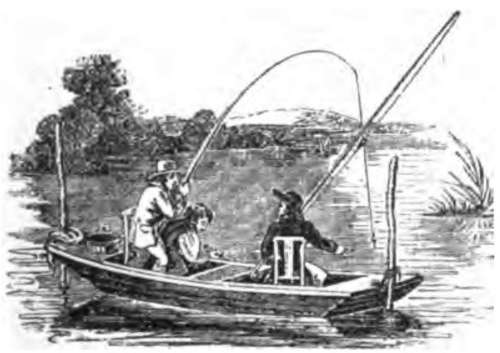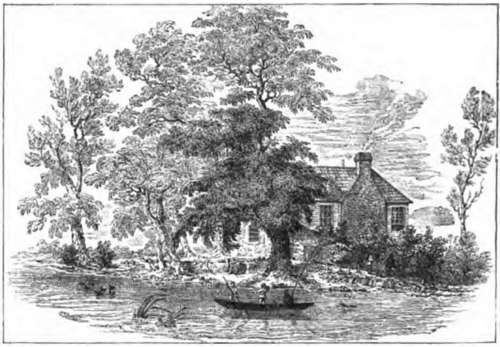Angling For The Rudd
Description
This section is from the book "Fishing", by Horace G. Hutchinson. Also available from Amazon: Fishing.
Angling For The Rudd
I think the most beautiful rudd I have ever seen were fish of about 1¾ lbs. to over 2 lbs. in weight, which we caught in the Fleet, near Felixstowe Ferry. The scales were a clear golden yellow, the fins like the red of a deep red tulip petal, and the shape was more symmetrical than that of Norfolk and Irish rudd. There are rudd in the Thames, but not in great numbers. Some years ago I got a lot for the Thames from a pond near Little-hampton; but the best way to stock the river with them would be to put some into the reservoirs at Hampton and Sunbury, etc. A few hundreds would soon increase to tens of thousands, and could then be netted out and put into the river; unfortunately Thames' fishing is so disturbed by the traffic that as a rule anglers prefer to go to quieter streams. There are no rudd in those fine rivers the Hampshire Avon and Stour. I am, this autumn (1903), giving some hundreds to my friend, Mr. Henry Newlyn, J.P., to put into his water on the Stour.
Rudd are fished for in the same ways and with the same baits as roach, and grow as large or larger, and in lakes and ponds and some rivers will take the artificial fly freely. Like dace, they are difficult to hook with the fly-much more so than trout, and I can strongly recommend the use of a small double-hooked fly both for dace and rudd. To be able to know whether a fish is a rudd or a roach, it is only necessary to remember that in the roach the first ray of the back fin is situated almost directly over the first ray of the belly fins; in the rudd, a perpendicular line from the first ray of the back fin shows the belly fins commence well in front of it. The iris of the eye of the rudd is a golden yellow, with a reddish tinge on the top part, but the colouring of the fish varies a good deal in different waters. The rudd spawns in April and May, and, like the roach, is very prolific, the number of eggs varying from 80,000 to 100,000 or more. A friend of mine, Mr. Percy Wadham, secretary of the Carisbrook Trout Fishing Association, put a few score rudd into a small pond in the Isle of Wight a few years ago, and now can get ten thousand young rudd a year from it. If anglers and angling associations stocked ponds with rudd, they would in most cases find a great increase of sport. I have not taken roach in the Isle of Wight, though rudd abound in some of the streams and ponds, and I think Mr. Wadham, who is a keen naturalist as well as a keen angler, told me there are no roach; pike are also missing-fortunately. Anglers who want rudd, and almost any other of our fresh-water fish, for stocking purposes, should make a note of the address of Mr. Thomas Ford, of Caistor, Lincolnshire. Mr. Ford has great experience in fish culture, and has stocked waters in all parts of the country. In some of the old angling books the rudd is called also Finscale and Red Eye, but in no district where I have fished have I heard it so called. The lips of the rudd project more when extended to take in food than those of the roach, the lower lip being very peculiar, viz., like a flat semi-circular door, hinged along the straight bottom edge, and closing the mouth almost vertically. Some of the old writers say the rudd is much prized as a delicacy, but those I have tried were no better than roach, and required a lot of sauce. I never taste Worcestershire sauce without thinking of the roach and rudd which a friend and I caught in Norfolk in the early 'seventies, and conscientiously tried to eat for breakfast. They would have been first-rate but for the bones and muddy flavour.


Continue to:
